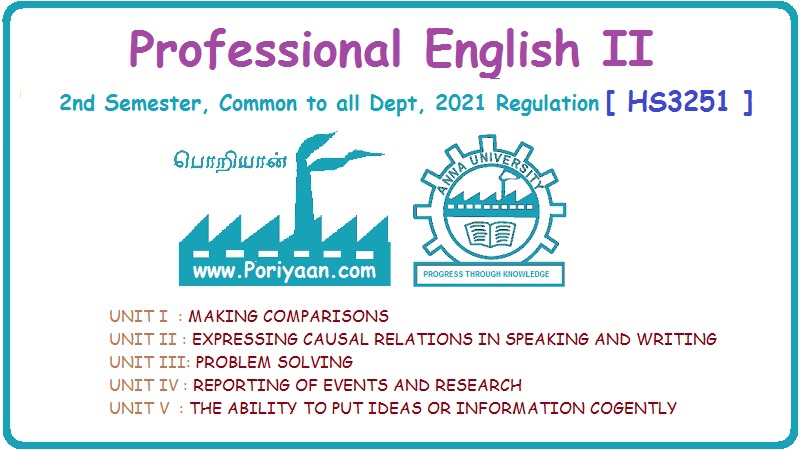Professional English: Listening: UNIT 2
Listening to Long Technical Talks
Professional English
Technical talks cover a wide range of technical concepts and ideas from how a technology or process works, to how to perform a specific task, to lessons learned in a project.
UNIT-II
5. LISTENING TO LONG TECHNICAL TALKS
Technical
talks cover a wide range of technical concepts and ideas from how a technology
or process works, to how to perform a specific task, to lessons learned in a
project.
They
are typically broadcast live, recorded and posted so that everyone can watch them.
How to prepare a technical talk:
Goals:
Convey good, new and useful information Keep the audience attention
Write
a thesis: Write a thesis on the select topic. Collect
information and derive new information. A clear, simple thesis will help guide
the audience.
Research:
Gather any information relevant to the thesis. Don't worry about form or structure.
Focus on surveying any possible topics to cover.
Outline:
Take all that information and arrange it roughly but orderly. Don't worry about
polishing. Some slides can say "diagram of X" or "code sample
Y".
Rehearse:
Give the talk as if the slides were finished. Remove the unnecessary slides.
Include the important information left out.
Practice:
Even a single rehearsal makes a big difference in talk quality. It's like
testing the speaker's code before pushing it to prod.bas agbelwood swing10
Polish:
Fix all the problems discovered in rehearsal. Fill in "todos" with
actual diagrams and code. Finalize the slide content.
Repeat:
Rehearse until the speakers feel comfortable with the talk. Rehearsals are a
must if the topic is difficult or unfamiliar.
Slide Tips:
Use
a few words: It's called a "talk", not a
"read." Don't include all information. Include only the clues. If the
audience could get all the content from just the slides alone, then there is no
need of a speaker.
Take
advantage of the medium. Use text to emphasize major points
but use the speaker's voice to elaborate.
Minimize
the speaker's code samples: Show as little code as possible or
abbreviations ("...") to shorten code samples.
Reveal
content incrementally: If a slide is prepared with five
bullet points, audience will read all five at once and will not concentrate on
what the speaker speaks. If the slide reveals one by one, the audience will
follow along with the speaker.
The
same applies for code. Either reveal code piece-by-piece
or progressively highlight different portions of the code.
Don't
worry about making beautiful slides: Don't concentrate on
decorative aspects. Audience comes for information not to see decoration. White
backgrounds with black text are enough.
Professional English: Listening: UNIT 2 : Tag: : Professional English - Listening to Long Technical Talks
Related Topics
Related Subjects
Professional English II
HS3251 2nd Semester 2021 Regulation | 2nd Semester Common to all Dept 2021 Regulation
